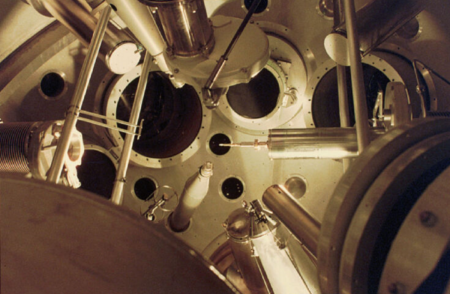
Scientists at the federal Lawrence Livermore National Laboratory in California have made a breakthrough in the search for zero-carbon energy, achieving a net energy gain in a fusion reaction for the first time.
Physicists have sought to harness the fusion reaction that powers stars since the 1950s, but no one has yet succeeded in producing more energy than is expended in the process.
It is previously known that Lawrence National Laboratory has succeeded in inertial confinement fusion, which involves bombarding a tiny pellet of hydrogen plasma with the world’s largest laser. Scientists have achieved a net increase in energy in a fusion experiment over the past two weeks.
Many believe that scientists and engineers still have decades of work to create fusion power plants. However, the potential of this technology is difficult to ignore – As a result of thermonuclear reactions, no carbon is released, no long-lived radioactive waste is formed. A small cup of hydrogen fuel could theoretically power a house for hundreds of years.
Course
TEAM MANAGEMENT
Gather your dream team and lead them towards a common goal.
REGISTER!
The U.S. breakthrough comes as the world grapples with high energy costs and tries to wean itself off fossil fuels to prevent global climate change. As part of the Inflation Reduction Act, President Biden’s administration is investing nearly $370 billion in subsidies for low-carbon energy in an effort to cut emissions.
The fusion reaction at the US government facility produced about 2.5 MJ of energy – almost 120% of the 2.1 MJ of laser energy used.
Financial Times sources reported this unofficially and indicated that the data needed further verification before official release.
Meanwhile, the U.S. Department of Energy said Energy Secretary Jennifer Grenholm and Undersecretary for Nuclear Security Jill Hruby will announce a “major scientific breakthrough” at Lawrence Livermore National Laboratory on Tuesday. The department declined to comment further. The laboratory confirmed that a successful experiment had recently been carried out, but said that analysis of the results was ongoing.
“Initial diagnostic data indicate another successful experiment at the National Ignition Center. However, the exact number of positive energy production is still being determined and we cannot confirm that it exceeds the threshold value,” the statement said. “This analysis is ongoing, so releasing information … until that process is complete would be inaccurate.”
People familiar with the results indicated that the energy output was greater than expected, damaging some diagnostic equipment and complicating analysis. Sources added that the breakthrough is already widely discussed in the scientific community.
“If this is confirmed, we will be witnessing a historic moment,” said Dr. Arthur Turrell, a plasma physicist whose book “Star Builders” describes the efforts to achieve fusion energy. “Scientists have been trying hard to show that fusion can release more energy than is consumed since the 1950s, and Livermore researchers appear to have finally and fully achieved that long-standing goal.”
The $3.5 billion National Ignition Center was originally built to test nuclear weapons by simulating explosions, but has since been used for fusion research. Last year, it came closest to net energy gain, producing 1.37 MJ from the fusion reaction, which was about 70% of the lasers in use at the time.
At the launch of the White House’s new nuclear energy strategy this year, Congressman Don Beyer, chairman of the bipartisan Nuclear Energy Caucus, called the technology the “Holy Grail” of clean energy:
“Fusion has more potential to lift more citizens of the world out of poverty than any technology since the invention of fire.”
Nicholas Hawker, chief executive of Oxford-based startup First Light Fusion, which is developing an approach similar to that used at NIF, called the potential breakthrough a “game changer” and added:
“There can be nothing deeper for fusion power.”
Most fusion research has focused on another approach, known as magnetic confinement fusion, in which hydrogen fuel is held in place by powerful magnets and heated to extreme temperatures so atomic nuclei fuse.
Historically, this area has been researched by large public laboratories such as the Joint European Thor in Oxford, but in recent years investment has also flowed into private companies promising to create fusion power in the 2030s.
Fusion industry companies attracted $2.83 billion in investment in the 12 months to the end of June, bringing total private sector investment to date to nearly $4.9 billion, according to the Fusion Industry Association.
Britain’s JET fusion reactor broke the record for energy production that had been held since 1997.
Source: Ars Technica




